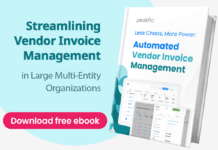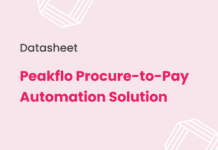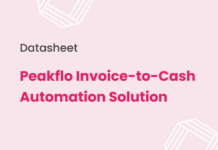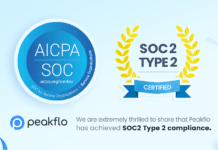Staying on top of your finances is crucial, and an efficient invoice approval workflow is at the heart of smooth operations. If you’re tired of manually inputting invoice data, dealing with errors, or facing approval delays, it’s time to revisit how your business handles this essential task.
In this guide, we’ll break down the key components of an invoice approval workflow, its benefits, common challenges, and how to streamline the process using automation.
What is an Invoice Approval Workflow?
An invoice approval workflow is a step-by-step process a company follows to ensure invoices are correctly reviewed, authorized, and paid. It typically involves multiple stakeholders such as department heads, finance teams, and managers who check the accuracy of the invoice, verify services or products received, and ensure payment terms are met.
At its core, the goal is simple – move invoices from receipt to payment as efficiently and accurately as possible.
Key Steps in the Invoice Approval Process
To better understand how an invoice approval workflow operates, let’s take a look at its basic structure:
- Invoice Submission
Vendors send invoices to the company. These invoices can be submitted via email, paper, EDI, or automated invoicing system. - Invoice Review
The finance team or department manager reviews the invoice for accuracy, ensuring that the goods or services have been received as expected. The reviewer checks for errors, such as wrong amounts, missing data, or duplicate entries. - Approval Routing
Once the invoice is reviewed, it’s routed to the appropriate person or department for approval. The routing can be based on a predefined approval matrix, like specific amounts requiring an executive’s sign-off. - Final Approval and Payment Authorization
After routing, the final approver signs off on the invoice, indicating that payment can be processed. This step often involves cross-checking the invoice with purchase orders, receipt notes, and contracts. - Payment Processing
The finance team disburses the payment based on the terms set with the vendor, completing the workflow.
Why is an Efficient Workflow Important?
Efficient invoice approval helps businesses avoid a wide range of problems. Here are a few key reasons why streamlining the process is critical:
- Avoid Late Payments: Delayed approvals often lead to late payments, which can damage supplier relationships and lead to late fees.
- Prevent Fraud and Errors: A structured workflow reduces the risk of unauthorized payments or accounting mistakes.
- Save Time and Resources: A clear and efficient process cuts down on back-and-forth communications and time spent tracking invoices.
- Enhance Visibility: Workflow tools give finance teams better oversight of pending invoices, outstanding approvals, and the status of payments.
Challenges in Traditional Invoice Approval Workflows
Although the steps above seem straightforward, traditional workflows often face several bottlenecks:
- Manual Data Entry:
Paper-based or email-submitted invoices require someone to manually input the data into accounting systems, which can lead to errors and delays. - Lack of Standardization
Different departments may follow varying approval methods, making it difficult to track invoices or establish accountability. - Approval Delays
If an approver is out of the office or overloaded with tasks, the invoice can sit idle for days or even weeks. - Lost Invoices
Paper invoices or email invoices can easily be misplaced, leading to delayed payments and operational disruptions. - Siloed Communication
Without a centralized platform for communication and approvals, teams may struggle to stay updated on invoice statuses.
How Automation Can Transform Your Invoice Approval Workflow
The good news is that most of these challenges can be solved by automating your invoice approval workflow. Invoice approval software uses technology to streamline each step of the process, reducing errors and freeing up time for your team.
Here’s how Peakflo’s AI-powered automation solution can help:
1. AI-Powered Invoice Data Capture
Using AI-powered OCR technology, invoice automation tools can automatically extract key data (like vendor name, invoice amount, and due dates) from invoices. This reduces the need for manual data entry, minimizing the risk of errors.
2. Automated Routing for Approvals
Rather than manually forwarding invoices to the right people, automation software can route invoices based on predefined rules. If an invoice exceeds a certain amount, it can be automatically sent for multi-level approval, while small dollar invoices can be routed to a single employee.
3. Approval Notifications
Automation tools can send reminders to approvers when an invoice is pending approval, reducing bottlenecks caused by forgotten tasks.
4. Matching Invoices to Purchase Orders
Protect your company against manual efforts of detecting overpayments, under deliveries, and fraud by automating matching invoices with purchase orders and receipt notes.
5. Centralized Platform for Visibility
With an automated solution, your entire team has access to a single platform where they can track the status of each invoice and audit trails. This makes it easy to identify which invoices are approved, which are pending, and which are ready for payment.
6. Faster Payment Processing
Automated systems can also integrate directly with your company’s payment system, allowing invoices to be paid quickly once they’re approved, reducing late fees, and maintaining good relationships with suppliers.
Key Benefits of an Automated Invoice Approval Workflow
- Increased Efficiency: Automation reduces manual tasks, allowing your team to focus on more strategic work.
- Reduced Costs: By eliminating paper invoices and manual processes, businesses save money on administrative tasks.
- Fewer Errors: Automated data capture and matching help minimize errors and improve accuracy.
- Improved Compliance: Automation ensures that invoices are routed and approved according to company policies, reducing the risk of non-compliance.
- Scalability: Automated workflows can handle high volumes of invoices, making it easy for growing businesses to scale.
Best Practices for Optimizing Your Workflow
Implementing automation is just the first step. To truly optimize your invoice approval workflow, consider these best practices:
- Standardize the Process: Ensure that your invoice approval process is consistent across all departments. This will make it easier to track and manage approvals.
- Set Approval Limits: Create a tiered approval system based on invoice amounts. For example, invoices under $1,000 might only require a junior manager’s approval, while higher amounts need senior management sign-off.
- Leverage AI for Invoice Matching: Use AI to automatically match invoices with purchase orders and receipts, saving time and improving accuracy.
- Monitor Performance Metrics: Track key metrics such as days payable outstanding, invoice processing times, and approval delays. Use this data to continuously improve the process.
A Way Forward
An efficient invoice approval workflow is key to maintaining good relationships with suppliers, improving cash flow, and reducing operational costs. By automating the process, businesses can eliminate many of the pain points associated with manual workflows, from delays and errors to lost invoices. Whether you’re a growing business or a large enterprise, investing in automation will help streamline your operations and keep your finances in check.
Peakflo’s Procure to Pay solution offers a comprehensive solution to streamline the invoice approval workflow by providing a centralized platform that automates the entire process, from invoice receipt to payment. With features like easy invoice capture, automated approval routing, and real-time status tracking, Peakflo ensures transparency and efficiency at every stage. The system eliminates manual data entry, reducing errors and approval delays ultimately improving cash flow and maintaining healthy supplier relationships.









![Why AI Sales Calls Are Making Good Sales Reps Even Better [2025 Guide] ai sales calls](https://cdn-kmjmp.nitrocdn.com/YvtqmrsiHUxqerlSiZgbfzqqTARWTElr/assets/images/optimized/rev-a4aafe3/blog.peakflo.co/wp-content/uploads/2025/09/65168cf6-3001-4733-8cbc-12d5684cf449-218x150.webp)

































